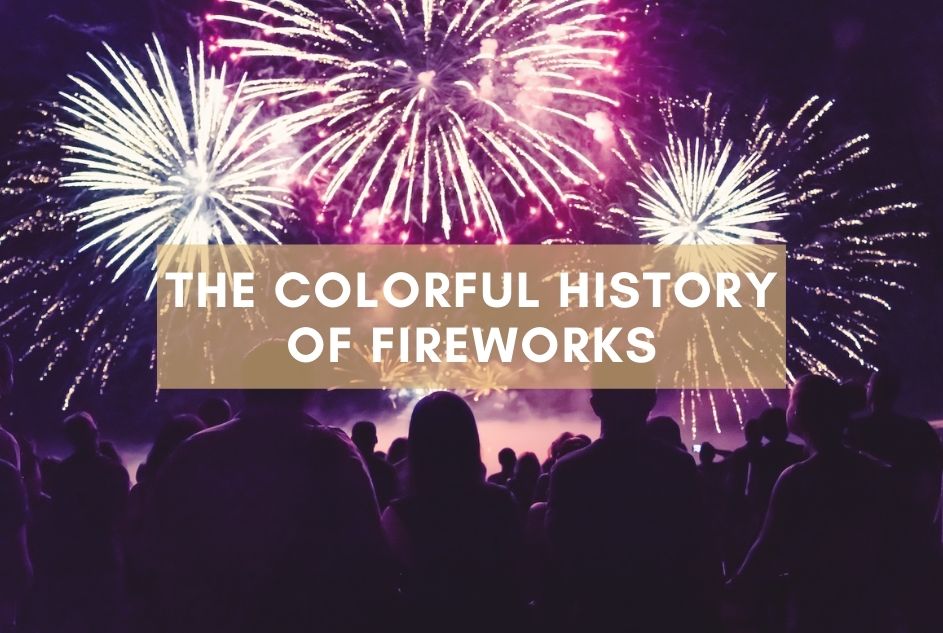

What would New Year’s Eve be like without a spectacular fireworks show? It would be lackluster, to say the least. Fireworks add magic and excitement to any celebration, but that wasn’t always their purpose.
Fireworks have an interesting history. The first fireworks were gunpowder firecrackers that didn’t do much but make noise. Before we dive into the history of fireworks, let’s look about what fireworks are and how they work.
What Are Fireworks?
Fireworks are explosive pyrotechnic devices that produce striking displays of light in a variety of shapes, as well as loud bangs or noises, smoke and, sometimes, materials such as confetti. They’re used to create fabulous displays or shows for entertainment purposes during grand events.


How Fireworks Work
Each modern firework consists of an aerial shell that contains gunpowder and dozens of small pods. The gunpowder is ignited by a lead fuse and an internal time fuse.
The pods, also known as stars, measure about 1 to 1.5 inches in diameter and hold fuel, an oxidizing agent (nitrate, chlorate or perchlorate), a binder (usually dextrin), and metal salts or metal oxides for color. Each star makes one dot in the fireworks explosion.
Different chemicals produce different amounts of energy, thus creating different colors:
- Reds: strontium salts such as strontium nitrate, strontium carbonate and strontium sulfate; lithium carbonate.
- Orange: calcium salts such as calcium carbonate, calcium chloride and calcium sulfate.
- Yellow: sodium salts such as sodium nitrate, sodium oxalate and cryolite.
- Green: barium salts such as barium nitrate, barium carbonate, barium chloride and barium chlorate.
- Blues: cooper salts such as cooper chloride, copper carbonate and cooper oxide.
- Purple: a combination of red and blue, made with strontium salts and cooper salts.
- Silver: white hot magnesium and aluminum.
- White:burning metal such as magnesium, aluminum and titanium.
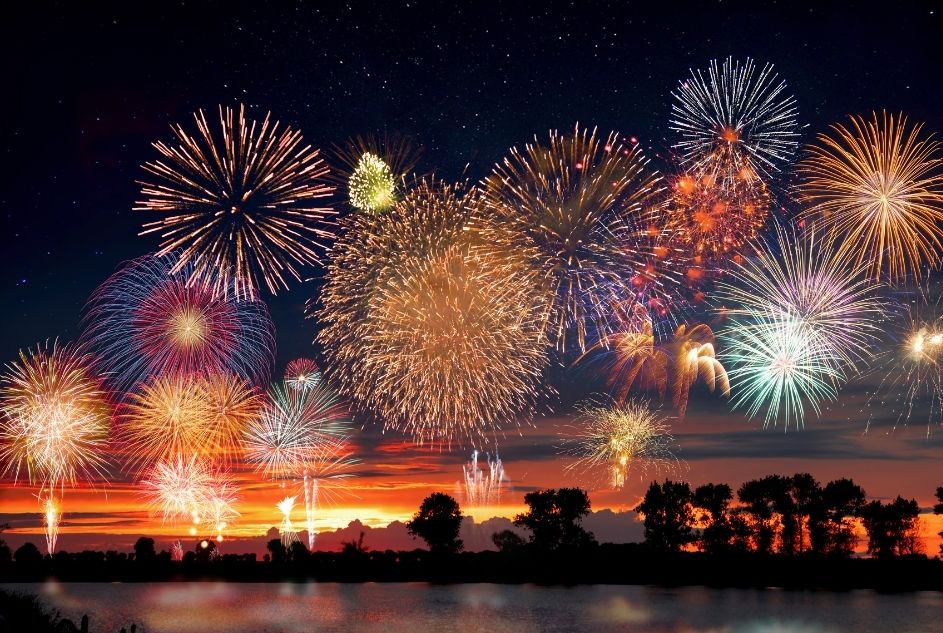

History of Fireworks
Once upon a time near a bamboo forest in China …
The Chinese
Most historians believe that fireworks were discovered by accident in China around 200 B.C., when bamboo stalks tossed into a fire exploded with a loud bang. The Chinese believed that these natural firecrackers could ward off evil spirits.
Gunpowder
A thousand years later, sometime around 800 A.D., a Chinese alchemist, or a cook, trying to invent a recipe to eternal life mixed saltpeter (potassium nitrate), sulfur and charcoal, inadvertently creating a black, flaky powder that caught fire and exploded: gunpowder.
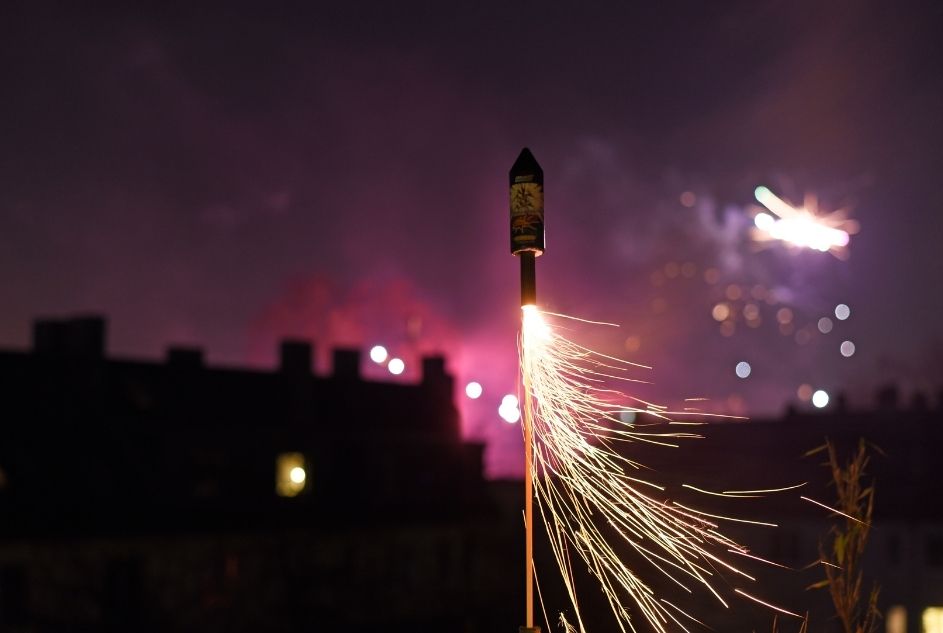

Firecrackers
The Chinese then filled bamboo sticks with gunpowder and threw them in a fire, producing a loud blast and making the first known firecrackers. Later, they used stiff paper tubes and fuses to ignite the firecrackers.
Marco Polo and the Crusaders
Many historians believe that the knowledge of fireworks spread to the West between 1300 and 1500. Marco Polo transported the invention either directly to the West or to the Middle East, where European crusaders discovered it and took it to Europe. Europeans used fireworks to celebrate military victories and other important events.
The Italians and the Germans
The Italians were the first Europeans to improve fireworks and manufacture them. They developed aerial shells that launched upward and exploded into fountains of color, lighting up the sky and thrilling the public.
During the Renaissance, firework development went in two directions: Italy and Germany. The Italians focused on elaborate effects, stunning audiences with dazzling displays, while the Germans stressed scientific advancement.
The English
In 1486, a fireworks show on the River Thames marked the coronation of Elizabeth of York (bride of Henry VII). In 1533, fireworks lit the sky for the coronation of Anne Boleyn (Henry VIII’s second wife). Fireworks grew in popularity in the late 16th century during the reign of Elizabeth I, who created the position of Fire Master of England.
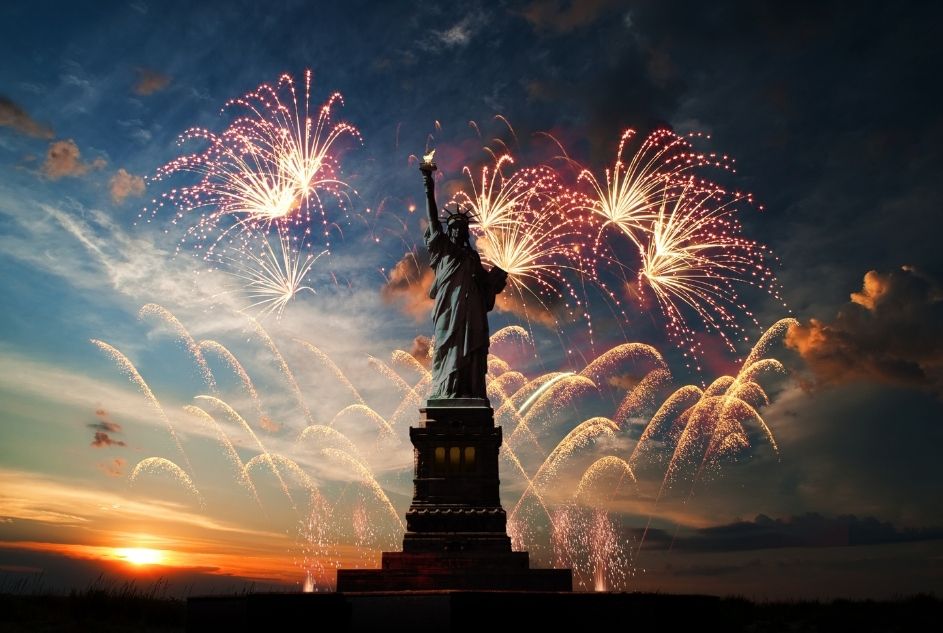

The Americans
According to legend, Captain John Smith set off the first fireworks display in the American colonies in Jamestown, Virginia, in 1608. Fireworks were used in Philadelphia during the first organized celebration of 4th of July in 1777. These early fireworks were not the colorful ones we enjoy today—displaying only the color of fire: orange. Americans began using fireworks on New Year’s Eve in the 1800s.
The Italians Again
Modern, colorful fireworks were born in the 1830s, when Italian scientists added trace amounts of metals and other ingredients to add color to the fireworks and create beautiful shapes in the sky.
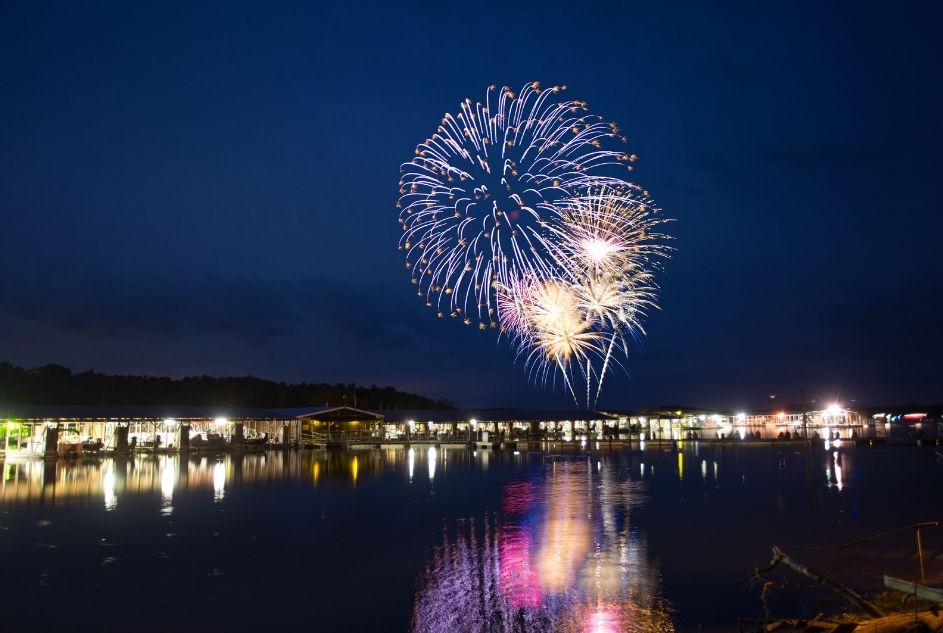

The World Today
The world’s love of fireworks continues to grow, and countries compete to have the largest, most sophisticated fireworks shows in the world. Here are some of the grandest fireworks displays on the planet:
- Fourth of July in Washington, D.C., Boston, Addison (Texas) and Disney World
- New Year’s Eve in New York City, London, Dubai, Rio de Janeiro and Sidney
- Bastille Day on July 14 in Paris
- France’s Cannes Fireworks Festival in July and August
- Kentucky Derby Festival on April 20
- Festival of Lights in Vancouver on July 27
- Bonfire Night on Nov 5 in England
- Chinese National Day in Hong Kong on Oct 1
- National Day in Singapore on Aug 9
- Malta International Fireworks in April
According to Guinness World Records, the largest fireworks display in the world took place on New Year’s Eve 2015-2016 in the Philippines and consisted of 810,904 fireworks. The display began at midnight and lasted for one hour and 32 minutes in the pouring rain.
To this day, China is the largest manufacturer and exporter of fireworks in the world.
Sources: American Pyrotechnics Association, History.com, American Pyrotechnics Safety & Education Foundation, Smithsonian Science Education Center, ChemWiki, Epic Fireworks, LiveScience, Compound Interest, American Chemical Society, Guinness World Records, Stylecaster, iExplore.
